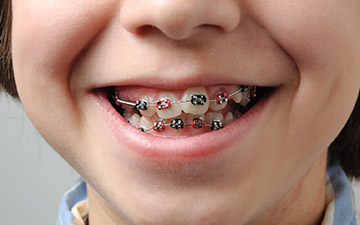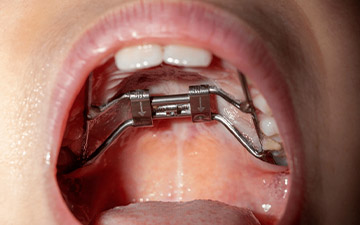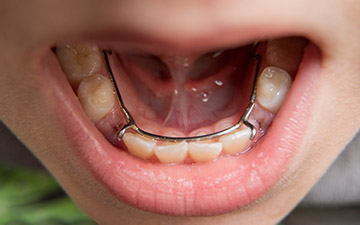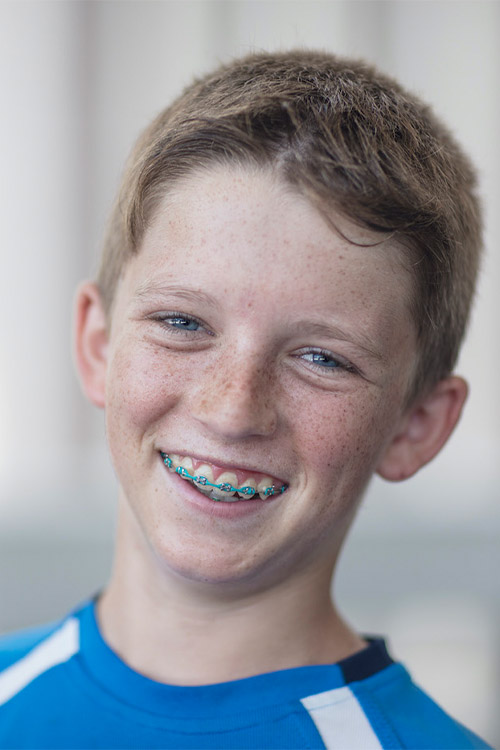Pediatric Orthodontist in Arizona, Colorado, Utah & New Mexico
Why Pediatric Orthodontics?
Early orthodontic evaluation is crucial as it allows orthodontists to detect and address potential dental issues in children at a stage when the jaw bones are still growing. This proactive approach can significantly influence a child’s oral development and general well-being. Early assessments help prevent the development of more severe complications that could require more invasive treatments later.
Benefits of Early Intervention
Early intervention in pediatric orthodontics can correct improper bites, prevent misalignment of teeth, and improve overall oral function. By guiding the development of the jaw and teeth, orthodontists ensure that children are less likely to experience dental overcrowding, misaligned teeth, and incorrect jaw development. This not only enhances the child's smile but also their ability to chew and speak properly.
Common Pediatric Orthodontic Treatments

Braces
The most traditional method for correcting teeth alignment through brackets and wires that apply pressure to the teeth, gradually moving them into the desired position.

Expanders
Used to widen the upper jaw to eliminate crowding and crossbites, ensuring there is enough space for adult teeth to emerge correctly.

Space Maintainers
Employed when a child loses a tooth prematurely. These devices keep the space open to allow the permanent tooth to erupt and come into place properly.

Purpose & Benefits of Pediatric Orthodontic Treatments
Braces not only straighten teeth but also help in correcting bite issues, which can improve oral health and aesthetics.
Expanders aid in creating a more proportional and functional jaw alignment, which facilitates better breathing, chewing, and speaking.
Space Maintainers ensure the long-term alignment of teeth by preventing other teeth from shifting into spaces meant for future adult teeth, thereby maintaining the integrity of a child’s bite and jaw structure.
When to Visit a Pediatric Orthodontist
Signs and Symptoms for Early Assessment
Parents should look for certain signs that might necessitate an earlier visit to a pediatric orthodontist:
1. Early or late loss of baby teeth which can indicate developmental issues.
2. Difficulty in chewing or biting which might suggest misalignment.
3. Breathing through the mouth consistently.
4. Thumb sucking beyond age five which can affect the development of the mouth and jaw.
5. Crowded, misplaced, or blocked-out teeth which can be visible as early as six years old.
6. Jaws that shift or make sounds which could signal joint problems.

Choosing the Right Pediatric Orthodontist
Specialized tRAINING
Ensure the orthodontist has specialized training in pediatric orthodontics.
experience
Look for an orthodontist with extensive experience treating children, as they will be more familiar with the unique challenges and needs of younger patients.
Creating a Positive Environment
The atmosphere of the orthodontic office is also crucial. A child-friendly environment can make visits less intimidating and more enjoyable for children. Additionally, consider the orthodontist's approach to patient care:
- Child-Friendly Communication: The best pediatric orthodontists know how to communicate effectively with children, explaining procedures in a way that is easy for them to understand without causing fear.
- Positive Rapport: Choose an orthodontist who can build a good rapport with children, making them feel safe and comfortable during their visits. This relationship is key to ensuring that the child feels secure and that the treatment process is as smooth as possible.
Differences Between Adult and Pediatric Orthodontics
For children, the focus is often on interception and prevention. Pediatric orthodontists aim to address developmental anomalies early to prevent them from developing into more complex problems. Adults seek orthodontic treatment primarily for corrective reasons—to adjust misalignments and resolve spacing issues that were not treated in childhood or have developed over time.
Children often use more visible appliances like traditional metal braces because they are cost-effective and durable. Since adults may be more conscious about the aesthetics, they tend to prefer less visible options such as ceramic braces or clear aligners like Invisalign. Moreover, the range of appliances needs to be broader for children to accommodate the ongoing changes in their growing mouths.
Flexibility and Timing: Children’s treatments might last several years, especially if they are begun early and are staged to work in conjunction with their development. Adults may face longer treatment times due to the slower nature of moving teeth within mature bones, or they may opt for accelerated options if suitable.

